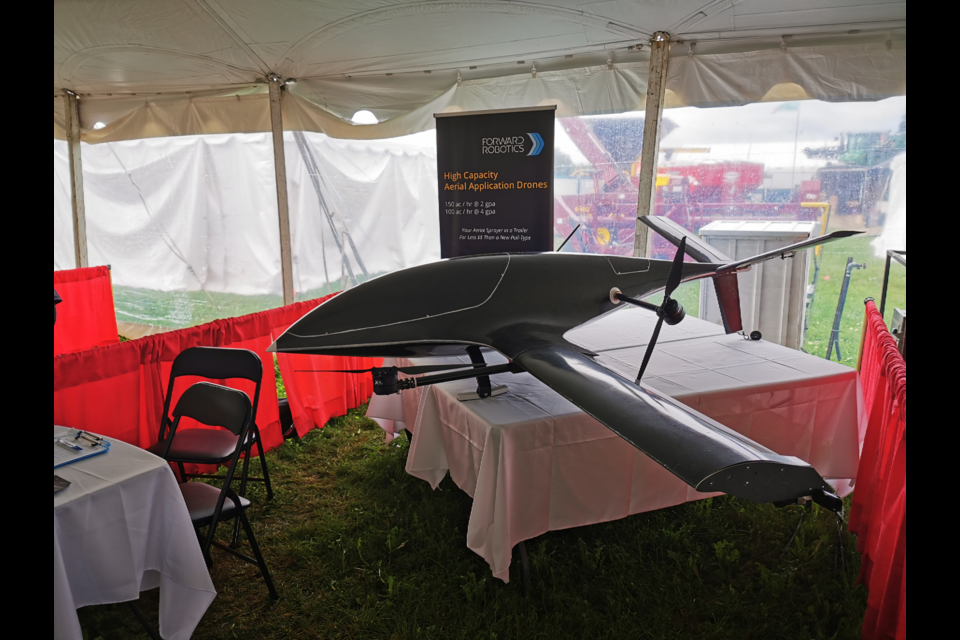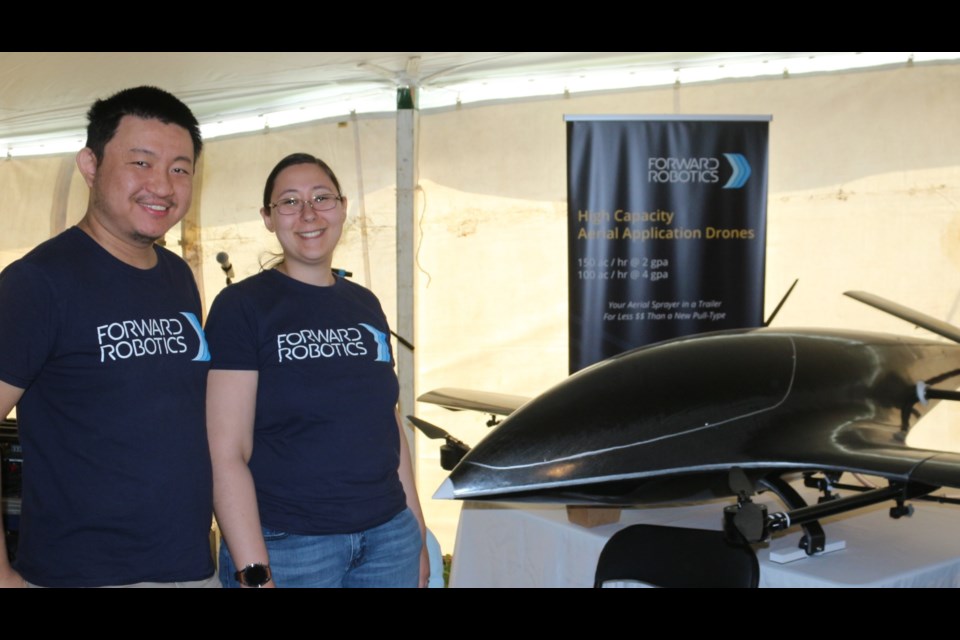A husband-and-wife duo are challenging critics who think that drones won't ever be an effective crop-dusting solution.
Meng Wei and Tamara Finlay, founders of Forward Robotics Inc., hit the road this summer to showcase the prototype of the U7AG Aerial Application Drone to farmers across Ontario, including a stop at the 2019 International Plowing Match.
The Kitchener couple met 10 years ago as students in the aerospace engineering program at the University of Toronto.
During a competition, they were driven to develop an autonomous, durable drone capable of flying in high winds.
At the time, they had no idea about the possible applications of this technology.
"We were always interested in working with drones because that's how we met," said Wei. "We always thought we were going to make some kind of product for people, but there are so many drone companies out there that it was a question of whether or not we could find something to contribute."
Want to read more stories about business in the North? Subscribe to our newsletter.
When they first started their drone company a year ago, they were playing with a few ideas on how to apply their design until they were approached by a Canadian farming company who suggested their drone had a lot of potential to be an aerial crop sprayer for big farms.
“We looked at our system, and it just clicked,” said Wei.
“Not only is the size of the drone able to do more than the ones on the market, but the control technology that we developed for handling winds also allows us to perform aggressive takeoff and landing and rapid refill operations.”
Once they ran all of the factors through the equation, they discovered that their technology is 10 times more productive than existing drones on the market.
Typical aerial application drones are too small. They can only spray about seven acres per hour. Many of them also have rotors. Rotors combined with limited storage capacity mean increased drift and inefficiency.
Essentially, the rotors whip fine droplets into a cloud that can float for several metres before hitting the ground.
“These kinds of drones are widely used in Asia,” said Meng. “It's just that the farms in North America and Australia are too big for this kind of technology to be effective.”
The U7AG is unique because it is significantly larger than other drones on the market and it flies with wing lift instead of rotors.
The drone is capable of covering 100 acres per hour. It also uses coarse to medium droplets which minimizes drift and increases efficiency
Wei and Finlay are also working to make the drone more user-friendly and affordable. One of their units will cost roughly $50,000.
Forward Robotics met with a lot of fans on the road this summer. There are roughly 70 farms across the province interested in their technology, including farms across Northern Ontario.
They are currently in the process of setting up water-only trials for the spring of 2020, and want to set up a chemical trial with a larger company in the hope of commercializing the unit next year.
“We are very excited because we've discovered something that has the potential to change the way people do things.”





